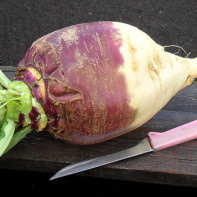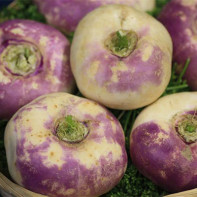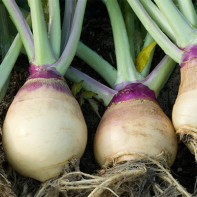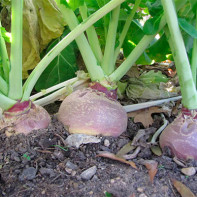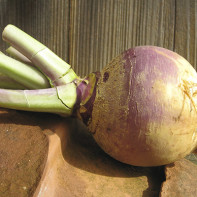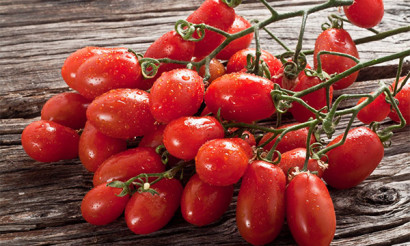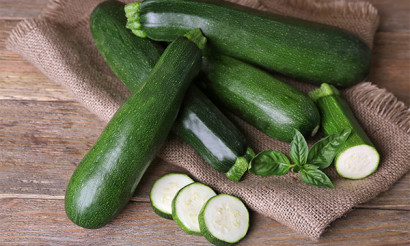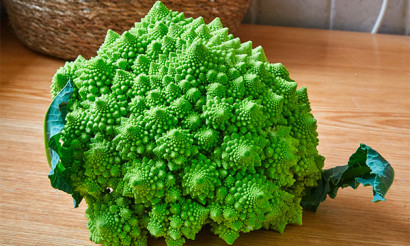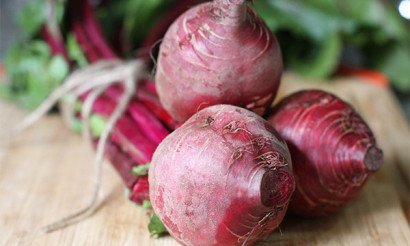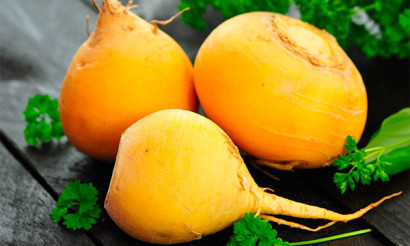Bellypea: what it is, useful properties and contraindications
Such a vegetable as rutabaga is found on the table quite rarely, but still it has its adherents, who are used to include it in various dishes. Outwardly, this root vegetable is not at all remarkable, but this does not affect its characteristics. But the benefits of rutabaga for the human body are invaluable. For a long time, people have been using it for medicinal purposes, as the product has a number of properties that can cure various ailments.
- What is rutabaga and what does it look like
- Types
- Rutabaga and turnip: what is the difference
- Composition and calories
- Useful properties of rutabaga
- General benefits
- For Women
- For Men
- In Pregnancy
- Breastfeeding
- For children
- When losing weight
- Campanula in folk medicine
- Diabetes mellitus
- With constipation
- With indigestion
- With pneumonia
- At arthritis
- Bronchitis
- Is rutabaga juice useful?
- Vinegar in cosmetology
- Nourishing skin mask
- For pigmented skin
- With dandruff and hair loss
- Health Hazards and Contraindications
- How to choose and store
- How to eat beetroot correctly
- What can be made of rutabaga: Recipes
- Salads
- Puree
- Baked vegetable with egg
- Porridge
- Interesting facts about rutabaga
Useful and harmful qualities of rutabaga are of interest to connoisseurs of unconventional medicine and lovers of unusual products. Otherwise, rutabaga is called Swedish turnip. This vegetable can help with many ailments, but before using it, you should know how to use it correctly.
What is rutabaga and what does it look like?
The rutabaga is a vegetable belonging to the cabbage family. It is presented as a two-year-old plant that consists of a root and a leafy part above the soil. The vegetable is characterized by its oval or round shape and looks more like a turnip, only somewhat larger. The rind of the root vegetable has a green or red-purple color, depending on the species. The flesh can be white, yellow or pale orange.

It should be noted that white rutabaga has a coarser structure, so it is a fodder crop, while yellow varieties are used in the culinary sphere. In its origin, it is a hybrid product obtained by crossing turnips with white cabbage.
As for the territorial origin of the vegetable, this question remains open. For example, some scientists believe that Sweden is the home of the rutabaga, while other researchers suggest that this delicacy was imported from the Mediterranean.
In terms of taste characteristics, we can say that the root vegetable resembles both a turnip and a cabbage at the same time. The raw vegetable has a rich flavor, the juicy flesh of the rutabaga is somewhat sweeter compared to the turnip. When boiled, the product tastes more like an ordinary potato.
Types
There are six known species of the plant, which are approved for use:
- Red rutabaga is a medium-early crop. The vegetable has a gray-green color with hints of purple. It has a flat-round shape and yellow, sugary flesh.
- The rutabaga "Baby Love" also belongs to the medium-early varieties, the vegetation period of which is on average 3 months. The root crop has an oval-round shape. It is recommended for fresh consumption. The flesh has a creamy yellow color, is quite juicy and dense.
- "Hera" is a medium-ripening type of crop with an anthocyanate-colored root crop. The vegetable has a rounded shape. It has good taste qualities.
- The "Novgorodskaya" rutabaga has a long shelf life, which allows it to be used throughout the winter. The fruit is characterized by its rounded elongated shape and juicy yellow flesh. This variety matures in 4 months from the time of sprouting. The product is used fresh, and its processing is also allowed.
- Variety "Bright Dream" is presented in the form of oval, yellowish-green fruits. It also stores well throughout the winter period. It is consumed fresh and processed.
- Verea rutabaga is presented as a flat-round root vegetable. Its flesh is very juicy and yellow. Maturity occurs 3 months after sprouting.
It follows that there are quite few varieties of this crop. This is due to the fact that the product is grown and consumed in small quantities. Although it used to be considered one of the popular vegetables, on a par with the familiar turnip.
Beluga and turnip: what is the difference
Beluga and turnip are two root crops that are similar in color, shape of the fruit and taste. Yet they are different vegetables.
Both crops are characterized by a lot of medicinal qualities, full of many useful elements and various vitamins, and are popular among gardening enthusiasts. They are characterized by early maturity and resistance to cold. You can eat them fresh, as well as stewed or stuffed.
Despite the fact that these plants are very similar in appearance, they are still different.
As for the shape of the rutabaga, it depends on the cultivated variety. So, the vegetable can have a round, cylindrical or slightly flattened shape. The top of the deciduous part above the ground is gray or brown, and the lower part is yellow. The root vegetable is also characterized by a tender orange-colored flesh.
Turnips, on the other hand, have a rounded-flat shape, both inside and outside they are golden yellow in color. Turnips weigh from 50 g to 0.5 kg per turnip, rutabaga - from 0.3 kg to 2 kg, depending on the variety. In terms of taste characteristics rutabaga is represented as something in between cabbage and turnip, and turnips are slightly sweeter than cabbage sprouts.
Regarding the chemical composition, it can be said that turnips are characterized by high levels of calcium, vitamins A, PP, the presence of amber acid.
Bellypea is characterized by a high content of potassium, sulfur, phosphorus, iron and ascorbic acid. Also this vegetable is more caloric and nutritious.
Composition and calories
Such a delicacy as rutabaga, for its nutritional properties and balanced composition can surpass many of its brethren. In the composition of this product, starchy substances and natural saccharides occupy a special place. In terms of the amount of vitamin C, the root vegetable is even ahead of citrus fruits and some berries. It is only slightly inferior to cranberries in its composition. The main benefit of this substance in rutabaga is that over time and with the heat treatment, it is not destroyed. Consequently, the product is able to bring great benefits to the human body.
Organic acids, mono- and disaccharides, dietary fiber are also found in the composition of the culture. Almost 90 percent of the product consists of water. The mineral composition of the dainty is also rich. So, here we can distinguish the following elements: Na, Mg, P, Fe, Ca, K. Among the vitamins the B-group occupies a special place in the composition of the plant component, namely riboflavin, thiamin, pyridoxine and folic acid. Tocopherol and niacin are also found here.
The caloric value of the root vegetable is 37 kcal per 100 grams.
Useful properties of rutabaga
General benefits
Adherents of proper nutrition regularly introduce rutabaga fruits in their menu in order to enrich the body with mineral components, vitamins and other valuable substances.

- The root vegetable is low in fat, but at the same time it has a sufficient amount of dietary fiber, which can activate the digestive processes. As a result of consuming the product, intestinal peristalsis improves and normal microflora is restored.
- This plant component will protect people from the development of obesity, will be a prevention of constipation and diarrhea. Some components of the vegetable are included in medicines for the treatment of lung cancer and rectal cancer.
- Rutabaga should also be consumed to protect the heart and blood vessels. This vegetable product is especially valuable because it contains various B vitamins, which are necessary for the sexual system. Bruvat is considered a natural aphrodisiac that can increase sexuality.
- Regular consumption of the vegetable promotes the removal of excess fluid from the body. This leads to the fact that swelling goes down, metabolic processes improve, and the blood circulation in the body improves.
- As you know, every month a woman's body loses a lot of iron, as a result of which there is a decrease in hemoglobin levels. The rutabaga contains a sufficient amount of iron, which can normalize the hemoglobin index, relieve dizziness, weakness and pain in the lower abdomen.
- The presence of calcium and phosphorus in this root vegetable should also be noted. These minerals are necessary for the normal functioning of bones, teeth and nails. The vegetable has an optimal amount of these substances, so it is able to cover the daily requirement for both children and adults.
- Not only the pulp of the fruit is considered useful, but also its squeeze. Freshly squeezed drink is characterized by bactericidal and anti-inflammatory properties. Thus, rutabaga juice allows you to disinfect the oral cavity, being the prevention of tooth decay and bleeding gums.
- It is also known for external application of plant raw materials in the form of a pulp. Lotions with the addition of rutabaga puree heals and disinfects wounds, treats burns and various pus formations. Bryukva is a vegetable that has regenerating characteristics. This allows it to be used in the treatment of various dermatological ailments.
- With regular consumption, the root vegetable strengthens the body's defenses, prevents the development of avitaminosis.
- It is also worth noting the diuretic effect of such a plant component. This peculiarity of the crop is useful for people who have a tendency to edema. In addition, the plant helps to treat diseases of the respiratory system, as it removes phlegm from the respiratory organs.
- It is recommended to include the product in the diet to prevent cancer. The rutabaga contains many antioxidants, so it is useful for health in that it prevents the development of malignancies.
For women
The benefits of the examined root vegetable for the female body lies, first of all, in the presence of iron. Use such a product in the diet should be with abundant and painful menstruation. The vegetable will help to replenish blood loss, as well as prevent the development of anemia and weakness. In addition, the plant is able to strengthen the immune system. This will help the fairer sex to protect themselves from colds.
You can also use the vegetables for the treatment of inflammatory diseases of the urogenital tract, as well as when prone to the formation of edema. So, the crop can not only have a diuretic effect, but also eliminate unpleasant symptoms of inflammation.
Since the vegetable is high in vitamins, it will help maintain a good mood, as well as cope with stress.
For men
Periodic consumption of rutabaga allows you to maintain male health and protect the urogenital system from inflammation. Its benefit lies in the fact that against the background of the introduction of the component in the food is much less likely for a man to develop prostatitis.
The high level of potassium in the composition of the vegetable is also able to benefit the male body. Thus, the root vegetable strengthens blood vessels and prevents the development of atherosclerosis. This leads to the fact that members of the stronger sex are less likely to develop cardiovascular diseases.
The useful components of the product will help improve health in case of vitamin deficiency. The inclusion of the product in the diet is indicated for athletes. It will increase stamina, as well as energy reserves. In addition, the access of oxygen to all tissues of the body will be restored.
In pregnancy
Bruvara is also able to benefit pregnant women. First of all, it should be noted that this product is almost incapable of provoking nausea. During the period of fetal delivery, the vegetable is useful in that it allows you to fight swelling, which often develops in most women.
Ascorbic acid, found in rutabaga, can protect the body of the future mommy from colds. B-group vitamins have a beneficial effect on the developing fetus. While waiting for the baby, women often suffer from constipation. To solve such a delicate problem can rutabaga, as it has a mild laxative effect.
When expecting a baby, it is better to eat the root vegetable in a boiled or stewed form. Fresh vegetables contain a lot of fiber, which can cause flatulence and intestinal cramps.
When breastfeeding
Bruvna root vegetable helps to recover faster after childbirth. Such a vegetable product saturates the body with various useful substances, vitamins that help to establish digestion, improve intestinal peristalsis, as well as return a beautiful figure. However, you should introduce such a component in the diet only after the child is 3 months old. Otherwise, the coarse dietary fiber contained in rutabaga can provoke flatulence and colic in the baby.
For children
In stewed and boiled form, rutabaga pulp has a beneficial effect on children's health, as it strengthens the immune system and restores normal digestion. Calcium and phosphorus ensure proper bone formation and teeth protection, while fiber prevents the development of constipation.
It can be served to children from the age of 4 years. This is because the vegetable contains dietary fiber, which can not be absorbed by immature bodies at an earlier age. Even after 4 years it is best to subject the root vegetable to heat treatment. Such a procedure will reduce the level of fiber a little.
Despite the many positive properties, rutabaga still has certain contraindications. Therefore, before the first introduction of such a component, it is recommended to consult a pediatrician.
When losing weight
Swedish turnip is one of the best products that are recommended by nutritionists. This is due to the fact that the root vegetable is low in calories, as well as it concentrates a lot of fiber, vitamins and minerals.
This vegetable can be included in the menu of people who want to get rid of excess weight. The product provides removal of toxins from the body, restores intestinal peristalsis.
Ladies who are watching their weight should use such a root vegetable in their diet. He is a vegetable source of protein.
Brussels sprouts in folk medicine
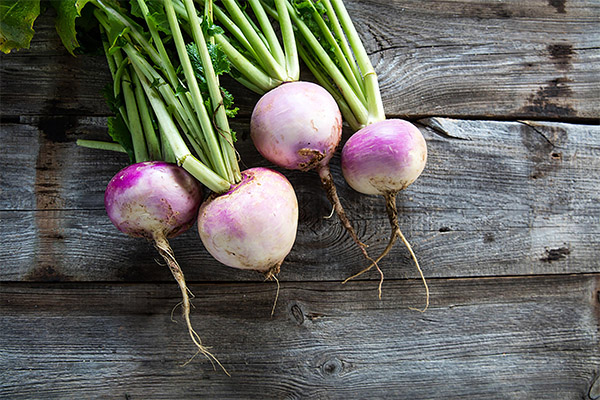
For diabetes mellitus.
In the composition of such a product of plant origin, a high concentration of natural sugars is found. Therefore, the culture is forbidden for use when a sugar disease is detected. As a last resort, you can try the treat in small portions, but first you should coordinate this with the treating physician.
Important: The glycemic index of rutabaga is 70 units.
For constipation
In chronic constipation, it is recommended to eat 200 g of rutabaga, ground to a mushy consistency, three times a week. You can also slice the vegetable and put it in the oven. Baked product can be eaten every other day at a rate of 100 grams.
For digestive disorders
Rutabaga will also help with digestive disorders. In this case, you should peel the root vegetable from the skin and boil it. However, before cooking, it is recommended to add a small amount of olive oil and lemon juice to the water. After such a heat treatment, the vegetable should infuse for another 30 minutes in the liquid in which it was boiled. It is necessary to use such a remedy when there are pains in the stomach, bloating and gas formation are observed.
With pneumonia.
As already noted, the examined product has a beneficial effect on the lungs and respiratory tract. With pneumonia, you should squeeze the juice of one raw vegetable, mix it with cranberry or currant juice. The resulting remedy to drink 4 times a day in an amount of 50 ml.
At arthritis.
With the help of rutabaga, you can cure arthritis. So, in the presence of inflammation in the joints, you can use the folk medicine recipe, for which you need to mix rutabaga juice with natural honey. The vegetable should first be ground in a blender, and then squeeze the juice through gauze. Then combine 100 ml of the resulting drink with 1 tsp. of liquid honey. The resulting composition to take 3 times a day. With regular use of such a preparation for 2 weeks, you can get rid of inflammation in the joints, relieve swelling and restore the mobility of the limb. Also such a complex can extend the period of remission.
In bronchitis
To cure bronchitis, you will need a stronger remedy on the basis of this vegetable. To do this, you will need 500 g of the root vegetable sliced and stewed with the addition of 50 g of butter. To the resulting mixture add the same amount of walnuts. Then pour 3 tablespoons of natural honey. The mixture should be simmered on low heat for a few more minutes, and then take it off the stove. Ready remedy eat twice a day as a separate meal. Continue the treatment for 10 days.
Is rutabaga juice useful?
Rutabaga juice is an effective expectorant and diuretic. In addition, it is recommended for use in acute diseases of the gastrointestinal tract. The composition of such a drink contains phytoncides, which have an antimicrobial effect. Thus, the product is indicated for external use in the treatment of dermatological pathologies, burns and purulent wounds.
Since ancient times, juice based on rutabaga has been used in folk medicine as an expectorant. Such a composition is useful in chronic lung and bronchial disease, debilitating dry cough with sputum difficult to separate. In these cases, honey juice of a root vegetable is indicated, for the preparation of which it is necessary to peel the medium-sized vegetable and grind it with a meat grinder or blender. Then add honey to the pulp at the rate of 2 parts of the vegetable juice and 1 part of the honey. Mix the mass thoroughly. The ready-made medication to use 1 dessert spoon several times a day, regardless of meals.
In diseases of the heart and urinary system, rutabaga juice will help to cope with swelling due to its diuretic effect.
It should also be noted the bactericidal properties of the drink on the basis of this vegetable. This allows its use for treating burns and wounds.
Vegetable juice is contraindicated in diseases of the stomach and intestines, which occur in the acute phase, kidney pathologies. Excessive consumption of juice leads to increased gas formation in the intestines.
Vinegar in cosmetology
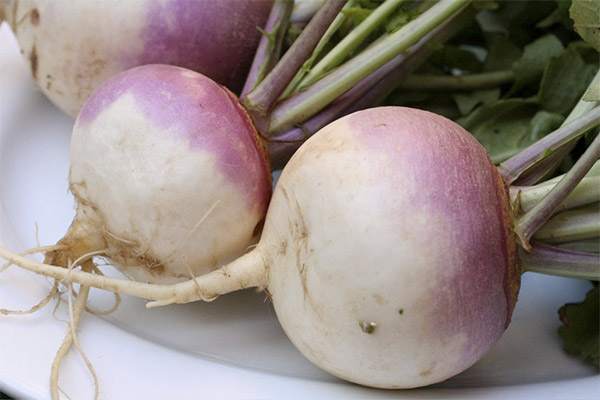
Nourishing skin mask
To saturate the dermis with useful substances and moisturize it, you can prepare a useful mask of rutabaga. For this you need a small piece of root grind with a blender and mix with the same amount of homemade sour cream. Add to this mixture 15 ml of cucumber juice and 10 g of honey. The resulting mask evenly apply a thick layer to the skin of the face. The mask works for 20 minutes. It perfectly nourishes the tissues of the skin. This leads to the fact that it eliminates all inflammatory processes. Also, this narrows pores, normalizes the synthesis of subcutaneous fat.
You can also use another recipe. In this case, the root must be grated on a fine grater. Then mix 50 grams of the resulting raw material with 15 ml of honey and 20 grams of carrot juice. Also you'll need to add to the composition 50 g of fat-free cottage cheese. Such a tool to distribute on the skin. After 10-15 minutes, wash your face with cool water.
From skin pigmentation
To eliminate age spots, stimulate hair growth and get rid of dandruff, freshly squeezed rutabaga juice should be rubbed into the problem areas.
The juice of the root and the pulp of the vegetable is recommended for the care of irritated skin, as well as for the rapid healing of wounds and cuts. Applying it is quite simple: you just need to grind it to a mushy consistency, mix it with vegetable oil, cream or sour cream. Such a simple complex of substances to apply to the skin and soak for half an hour. The valuable substances of this compress provide a rapid renewal of the dermis. This remedy is also used to get rid of pimples and acne.
For dandruff and hair loss
The vegetable can also be used for dandruff and hair loss. The benefit of this plant product in this case is that it strengthens weakened hair follicles. To achieve a positive effect, you need to mix 2 tbsp. squeeze the root and 3 drops of lemon juice. The resulting mixture should be regularly rubbed into the roots of the hair and soak for 30 minutes under a warm towel. Swedish turnip will help to restore the health of the scalp, eliminate dandruff and make hair stronger.
Harms and contraindications
We must remember that each product has certain contraindications, regardless of the number of positive properties. As for rutabaga, it should be noted that it concentrates a high level of dietary fiber. Therefore, if there are pathologies of the digestive tract, the root vegetable is contraindicated for use.
It is also important to know that this root vegetable refers to cabbage. It follows that the abuse of such a product can lead to increased gas formation. Therefore, the use of the plant should be limited during pregnancy. In this case, it is better to eat the delicacy in boiled or baked form. Also such a component can be added to vegetable salads.
Not everyone can use rutabaga for therapeutic purposes. The product should not be used if there is an individual intolerance, inflammation of the bladder, gastritis and ulcers in the acute phase.
Rough fibers in the root can have an irritating effect on the inflamed mucous membranes of the digestive tract. If you are prone to heartburn, eat rutabaga with caution.
How to choose and store
The vegetable is sold in raw form. To choose a quality product, you should take into account several points. First of all, you need to remember that you should pay attention to root vegetables with a smooth and hard surface. The vegetable should have several leaves and fibrous roots.
You should not choose soft and damaged specimens, as they may be spoiled inside.
If the fruit is very light, it is likely to be hollow or porous and have tough fibers. Such a product has a pungent taste and is unlikely to please anyone.
Overripe rutabaga is characterized by a tart taste, and medium-ripening vegetables have a sweeter flavor.
The vegetable is stored in the refrigerator, in the vegetable compartment or in the cellar.
How to Eat Rutabaga Properly
In order for the root vegetable in the form of rutabaga to be useful for health, it needs a certain preparation before consumption. First, it must be thoroughly washed. Next, cut off the upper part of the vegetable, divide the fruit into 2 parts with a knife and peel the skin.
Cut the peeled pulp into slices and eat it fresh. You can also boil this vegetable until it becomes soft, stew or bake in the oven. The root vegetable goes well with other vegetables and meat dishes.
With the rutabaga rind is not recommended to eat, because this layer of the vegetable is not suitable for use in food.
It is best to consume the product in the morning or in the afternoon. The evening meal will not be very harmful, but it will lead to the fact that the digestion processes in the body are activated. This, in turn, will cause insomnia.
What can be cooked from rutabaga: recipes
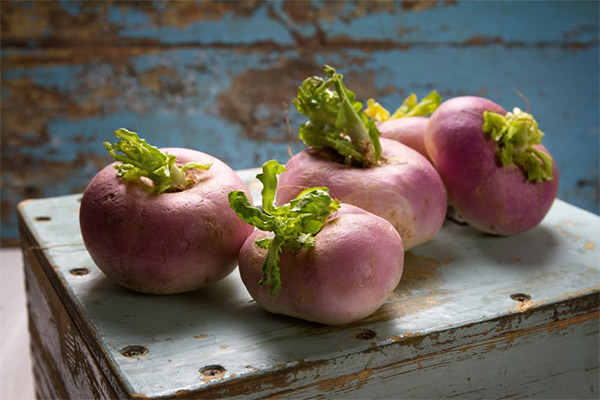
Salads
- From rutabaga you can prepare a variety of dishes, for example a fresh salad. To do this, you need to chop a fresh root vegetable and radish into small slices. Next, chop slices of ham. Now add chopped greens and onions to these ingredients. After that, grate some pistachios until they form flour and combine with the rest of the ingredients. Dress the salad with a sauce made of mayonnaise and mustard and serve.
- To prepare another salad, grate a medium-sized root vegetable and carrot on a coarse grater, add some raisins and walnuts. For dressing, use sour cream. Decorate the finished dish with fresh herbs.
- Also rutabaga is part of another salad, for which you will also need apples. In this case, you need to grate the vegetable, then put it in boiling water, and then in ice water. Now dry the root vegetable with paper towels. Next, mix the rutabaga with the same amount of apples, cut into thin julienne. For dressing, sour cream, which should be previously mixed with a small amount of lemon squeeze and chopped parsley greens, will be excellent.
Puree
To obtain rutabaga puree, you need to take 800 g of the vegetable and cut it into small pieces. After that, place the product in a saucepan and pour hot water so that the delicacy is drowned in the liquid. With a little salt, cook the root vegetable until soft. Next, mash the rutabaga until it forms a puree. Then add 100 g of butter and 250 ml of hot milk to the dish. If necessary, salt to taste. Serve the dainty with fresh parsley.
Baked vegetable with egg
To prepare rutabaga, baked with egg, you need to peel the root vegetable from the skin, pour water and cook until half cooked. After that, the vegetable should be sliced in any convenient way, salted and peppered. Next, bread the product in flour and fry it in oil on both sides. Now mix raw egg with sour cream. Pour the resulting mixture over the root vegetable, sprinkle with grated cheese and send it to the oven.
Porridge
From this vegetable, you can prepare porridge. For this you will need 2 rutabaga fruits, a couple of onions, 300 ml of milk, 1 tbsp of flour and the same amount of oil.
First you need to boil the fruits of this culture in water, grind them until they form a mush, and then add the onions, previously fried in oil. It remains only to pour the milk and simmer on low heat for another 5 minutes, constantly stirring the porridge.
Interesting facts about rutabaga
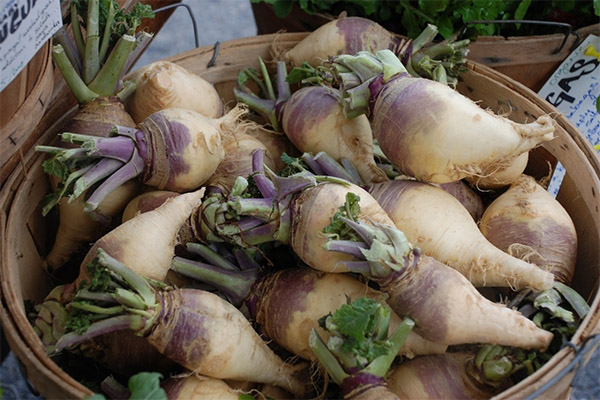
- In Tsarist Russia this vegetable was practically never grown. The product came to our region from Europe in the twentieth century. Initially it was used as a food together with turnips.
- It is believed that a writer such as Goethe was very fond of rutabaga, and on his table were mostly dishes made of it.
- Every year in November in a town in Switzerland there is a festival where this particular root vegetable is in the spotlight.
- In Ireland and Britain on Halloween, turnips, beets and rutabagas were used to make glowing heads.
«Important: All information on this site is provided for informational purposes only. purposes only. Check with your health care professional before using any recommendations. specialist before applying any of the recommendations. Neither the editors nor the authors shall be held liable for any possible harm caused by materials."

